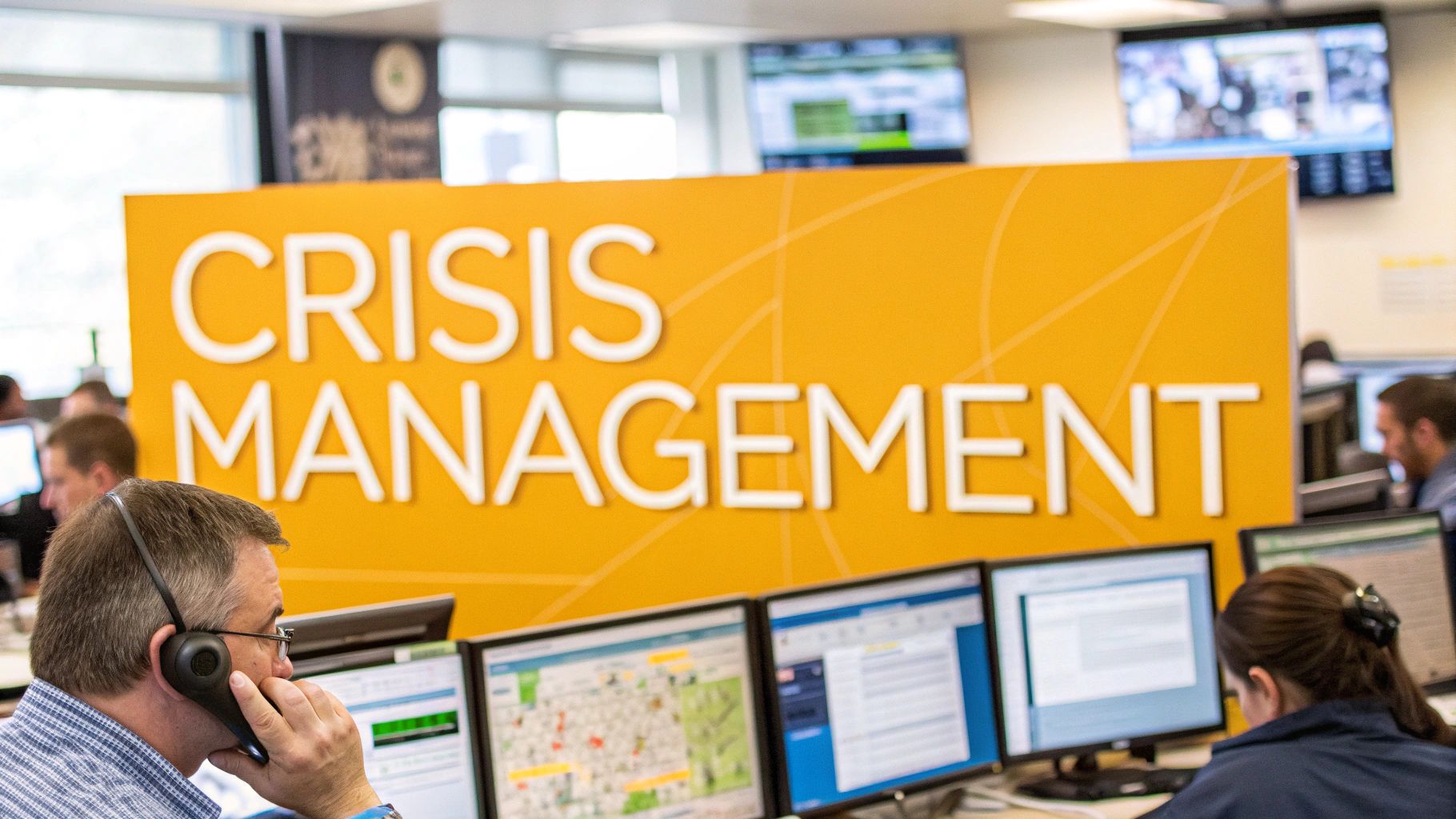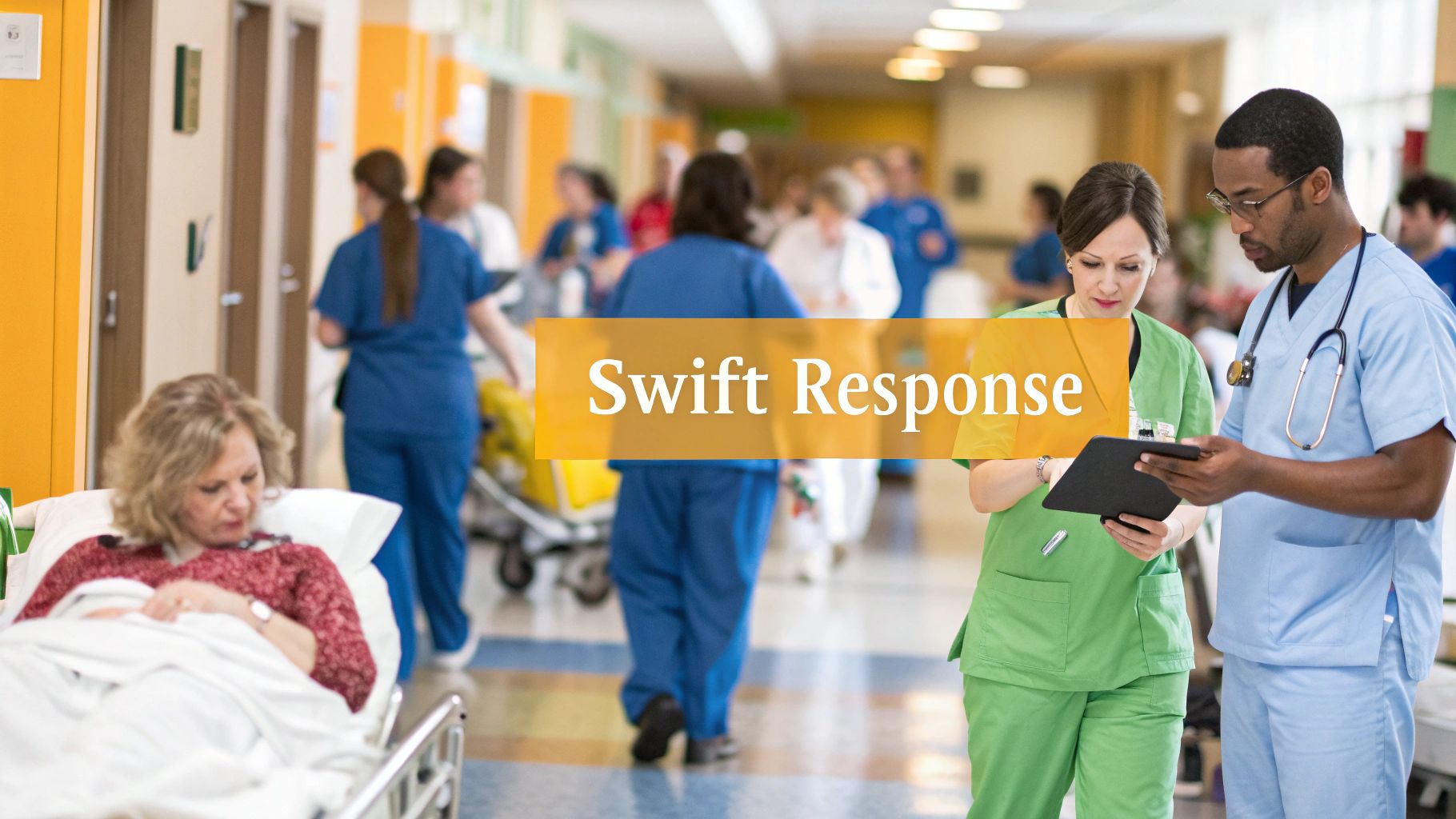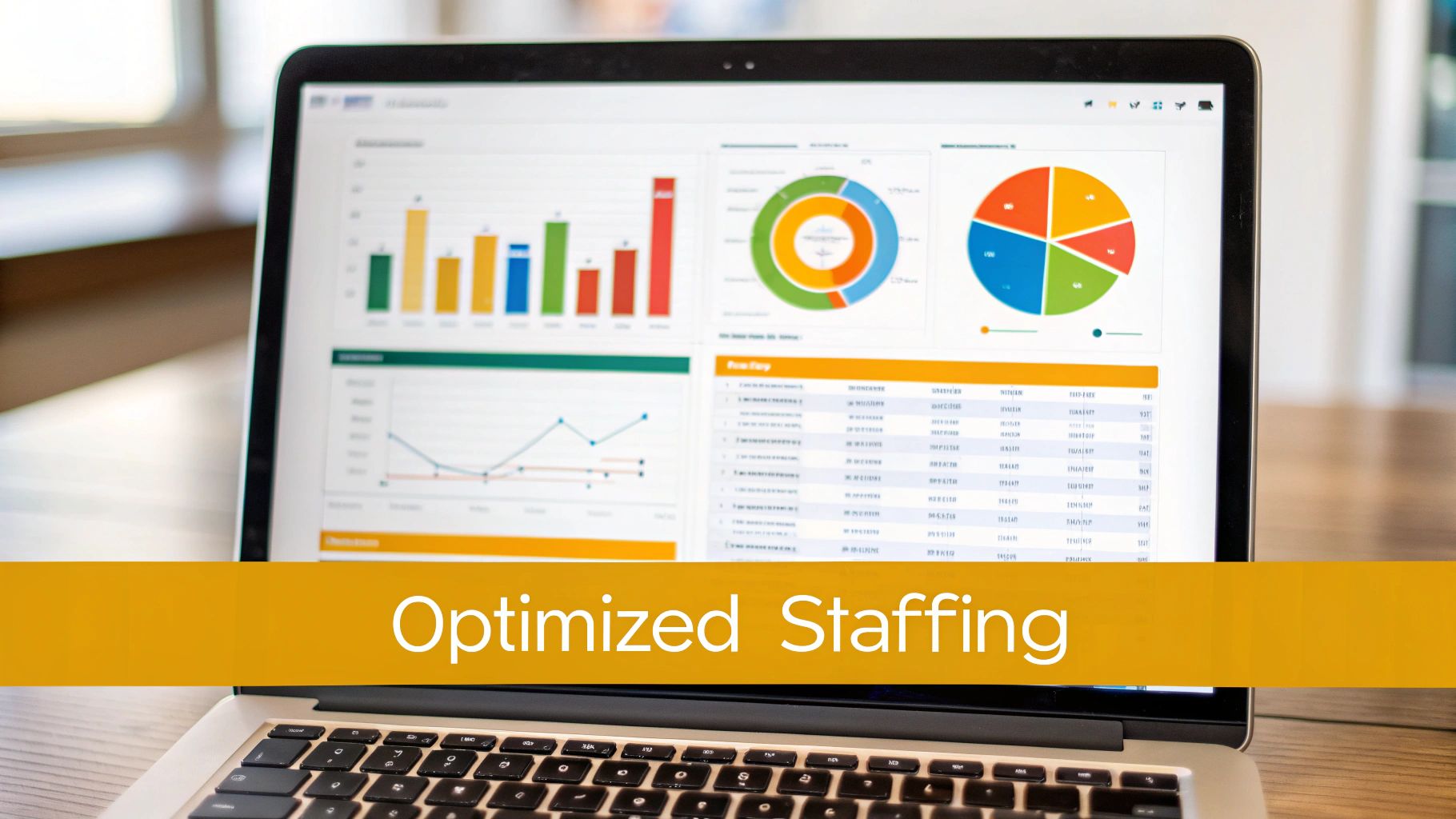From our resource library for organizational scheduling and management.
Emergency Staffing Solutions: A Strategic Guide to Crisis Management and Operational Continuity

Understanding the Modern Emergency Staffing Crisis

Emergency services across the country face serious staffing shortages that threaten their ability to serve communities effectively. From ambulance crews to firefighters and emergency dispatchers, these essential workers keep our communities safe. But maintaining adequate staffing levels has become increasingly difficult, putting both responders and the public at risk.
The Ripple Effect of Understaffing
When emergency services are short-staffed, response times suffer. A medical emergency that needs immediate attention may face dangerous delays. Fire departments struggle to meet minimum crew requirements for safe operations. The remaining staff face mounting pressure as they try to cover more shifts and handle higher call volumes. This creates a brutal cycle - overworked responders burn out and leave, making the staffing shortage even worse.
The crisis is especially clear in our nation's 911 centers. Recent data shows an average 25% vacancy rate from 2019-2022, meaning one in four positions sit empty. For more details, see the 911 Staffing Survey Report. When dispatch centers are understaffed, both emergency responders and the public face increased risks.
What's Driving the Crisis
Several key factors fuel this staffing emergency. Many experienced responders are retiring or leaving due to stress and burnout. Training programs struggle to produce enough new qualified candidates. Meanwhile, call volumes keep rising as populations age and grow. Low pay and difficult working conditions make it hard to attract and keep good people. These challenges feed into each other, making the problem worse over time.
Finding Real Solutions
Solving the emergency staffing crisis requires immediate action and long-term planning. Emergency services need better recruitment and retention strategies, including competitive pay and sustainable schedules. New staffing models could help distribute workloads more evenly. While technology can help existing staff work more efficiently, the core issue is having enough qualified people to handle emergencies. The safety of our communities depends on maintaining strong emergency services with adequate staffing levels.
Healthcare Emergency Operations: Breaking Down the Impact

Staff shortages are creating major challenges in healthcare delivery. These gaps affect how hospitals and medical facilities operate at every level. Understanding these effects is essential for creating effective emergency staffing plans.
The Strain on Patient Care
When medical facilities don't have enough staff, patient care suffers first. Patients face longer waits and get less time with their care providers, which can lead to worse health outcomes. Staff members working extra hours are more likely to make mistakes that put patients at risk. For example, delayed responses in critical situations can have serious consequences for patient health and recovery.
Impact on Team Dynamics and Morale
Medical teams need strong collaboration to function well. When teams constantly work short-handed, stress builds up and staff satisfaction drops. This often leads to burnout and people quitting their jobs, which makes the staffing problem even worse. You might be interested in: Fire Department Scheduling Software: The Ultimate Playbook for Modern Emergency Services.
Operational Inefficiencies and Increased Costs
Staff shortages create problems throughout hospital operations. Many facilities have to delay non-emergency procedures or send patients to other hospitals. This disrupts care and drives up costs significantly. Hiring temporary staff through agencies helps fill gaps but comes at a premium price. Emergency departments face particular challenges - even before COVID-19, 90% of U.S. EDs reported operating under heavy strain. The pandemic made these issues much worse. Learn more about ED staffing challenges here.
Measuring and Monitoring Staffing Impacts
Smart healthcare organizations track key metrics to understand staffing problems. They look at wait times, staff turnover, and safety incidents to spot trends early. This data helps them target solutions and show how emergency staffing investments improve both patient care and efficiency. By watching these numbers closely, hospitals can reduce the negative effects of staff shortages and maintain quality care standards even during difficult periods.
Better Strategies for Emergency Service Recruitment

Finding skilled professionals for emergency services takes smart, modern recruitment approaches. The old ways of hiring don't work as well anymore, as the job market has changed significantly. Emergency service organizations need fresh strategies to bring in the right people.
Social Media and Online Recruiting
Social media platforms are great tools for connecting with potential candidates. Running targeted ads on Facebook, Instagram, and LinkedIn helps reach people interested in emergency service careers. Specialized healthcare and emergency service job boards also help find qualified candidates actively looking for these positions.
Creating an Appealing Workplace Culture
Having a strong workplace reputation makes a big difference in attracting talent. Show what makes emergency services rewarding - like making a real difference, working with dedicated teams, and growing professionally. Share real stories from emergency responders about their work and impact on the community.
Smart Benefits and Education Programs
Good pay matters, but additional perks can help attract and keep great people. Consider offering:
- Student loan repayment help
- Welcome bonuses
- Housing assistance programs
Working with local colleges through internships and scholarships creates connections to future emergency professionals.
Making Hiring Simpler
Long, complex hiring processes can turn good candidates away. Keep things straightforward with:
- Easy online applications
- Virtual interviews when possible
- Quick responses to applicants
Using digital tools for applications and screening saves time for both candidates and hiring teams.
Community Connections
Getting involved locally through job fairs, school visits, and volunteer events builds relationships with potential future employees. These activities help people learn about emergency service careers while showing the organization's community commitment. Building these connections brings in candidates who really want to serve their neighbors.
This balanced approach to finding new emergency service workers helps build strong teams ready for challenging but rewarding work. The key is combining traditional outreach with modern hiring tools while emphasizing the meaningful impact of these essential roles.
Designing Adaptive Staffing Models That Scale

Every emergency service organization needs a staffing model that can handle both daily operations and unexpected crises. Traditional staffing approaches often fall short when demand suddenly spikes. That's why forward-thinking organizations are adopting more flexible staffing frameworks.
Cross-Training: Building a Multi-Skilled Workforce
Cross-training helps create teams that can handle various roles effectively. For instance, EMTs learn basic firefighting skills, while dispatchers train in administrative work. This practical approach means team members can step in where needed during emergencies. Staff also benefit from learning new skills, making their jobs more engaging and rewarding.
Backup Staffing Plans: Preparing for the Unexpected
Think of backup staffing plans as your emergency response playbook for personnel. These plans detail exactly how to bring in extra help during crises or sudden demand increases. Your backup options might include partnerships with staffing agencies, lists of on-call workers, or plans to move staff between departments. Want to improve your scheduling approach? Check out: How to master staff scheduling with our ultimate guide.
Flexible Scheduling: Optimizing Resource Utilization
Flexible scheduling puts more control in your staff's hands. Options like compressed weeks, adjustable shifts, and self-scheduling help employees balance work and personal life. This approach keeps morale high and reduces turnover. It also ensures you have the right number of people working when you need them most, without excess overtime costs.
Assessing and Implementing Changes: A Step-by-Step Guide
Making these changes requires careful planning. Start by looking at what works and what doesn't in your current setup. Figure out where adding cross-training, backup plans, or flexible schedules could help most. Create a clear plan that includes training programs and ways to measure success. Keep track of how things are working and adjust as needed. Regular reviews help keep your staffing model strong and ready for whatever challenges come your way.
Technology for Emergency Workforce Management
Emergency services need effective tools to manage their teams and resources well. With ongoing staffing challenges in the field, having the right technology makes a real difference in how agencies handle scheduling, deploy staff, and coordinate responses.
Smart Scheduling and Resource Planning
Modern emergency staffing software takes the hassle out of complex scheduling tasks. Rather than spending hours manually coordinating shifts, managers can automate things like shift swaps, time-off requests, and filling open positions. The software also helps prevent scheduling gaps by matching staff skills and certifications to specific roles. This gives managers more time to focus on supporting their teams and handling critical operations.
Better Team Communication
Good communication can make or break emergency response effectiveness. Mobile apps and messaging tools help teams share updates instantly between dispatchers, managers and field staff. When everyone stays connected, they can adapt quickly as situations change. Clear communication channels also help teams work together smoothly during critical incidents.
Making Data-Driven Decisions
Today's workforce platforms collect valuable data about staffing patterns, response times, and operations. By looking at this information, managers can spot trends and make smarter choices about scheduling and resource use. The insights help identify what's working well and what needs improvement. Learn more in our article about Healthcare Staff Scheduling Software: The Ultimate Guide for Modern Medical Teams.
Picking the Right Tools
When choosing emergency staffing solutions, agencies should carefully evaluate their specific needs. Key things to consider include:
- Room to grow: The system should handle increased staff and changing demands
- Works with other tools: Should connect smoothly with existing systems
- Easy to use: Staff at all levels need to work with it easily
- Keeps data safe: Strong security for sensitive information
The right technology helps emergency services work more efficiently and serve their communities better. By focusing on these essential factors, organizations can find tools that truly support their teams and help them deliver excellent emergency care.
Building a Culture of Retention and Support
Attracting qualified professionals to emergency services is vital, but keeping them is equally important. Losing staff too frequently makes shortages even worse, which makes retention the foundation of any effective emergency staffing solution. The key is creating an environment where employees feel supported, valued, and able to grow professionally.
Understanding Why People Leave
Before making changes, organizations need clear insights into their turnover patterns. Staff often leave due to feeling burnt out, seeing no path forward in their career, or lacking proper support systems. Exit interviews provide valuable feedback about real employee experiences that can guide meaningful improvements.
Creating a Better Work Environment
Emergency response work involves intense stress levels. Organizations must provide robust mental health support, including counseling services and peer support groups. Staff also need to know they can raise concerns openly without negative consequences. This requires clear communication channels and managers who actively listen and address feedback.
Growing Professional Skills
Staff need genuine opportunities to advance and develop new abilities. Some effective approaches include:
- Covering tuition costs for relevant education
- Mapping out clear career advancement paths
- Providing access to specialized certifications and training
These investments help staff grow their capabilities while increasing job satisfaction and loyalty.
Building Strong Retention Programs
The most effective retention strategies take a complete view of both work and personal needs. Key elements include:
- Mentorship: Connecting experienced staff with newer team members
- Schedule flexibility: Offering schedule options where operations allow
- Recognition: Regularly acknowledging and celebrating staff contributions
Tracking What Works
Implementing retention programs is just the start - organizations must measure results and adapt. Track important metrics like turnover rates, satisfaction scores, and how many people use support services. This data shows which approaches are effective and what needs adjustment. Regular surveys and focus groups provide additional insights to keep improving retention efforts over time.
Looking to strengthen your emergency services team and reduce turnover? Acroroster provides the tools you need to optimize scheduling, improve communication, and keep your valuable staff. Contact us today to see how we can help.